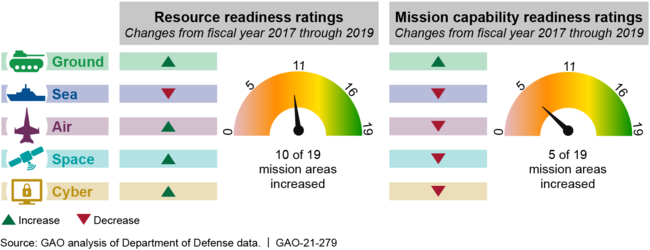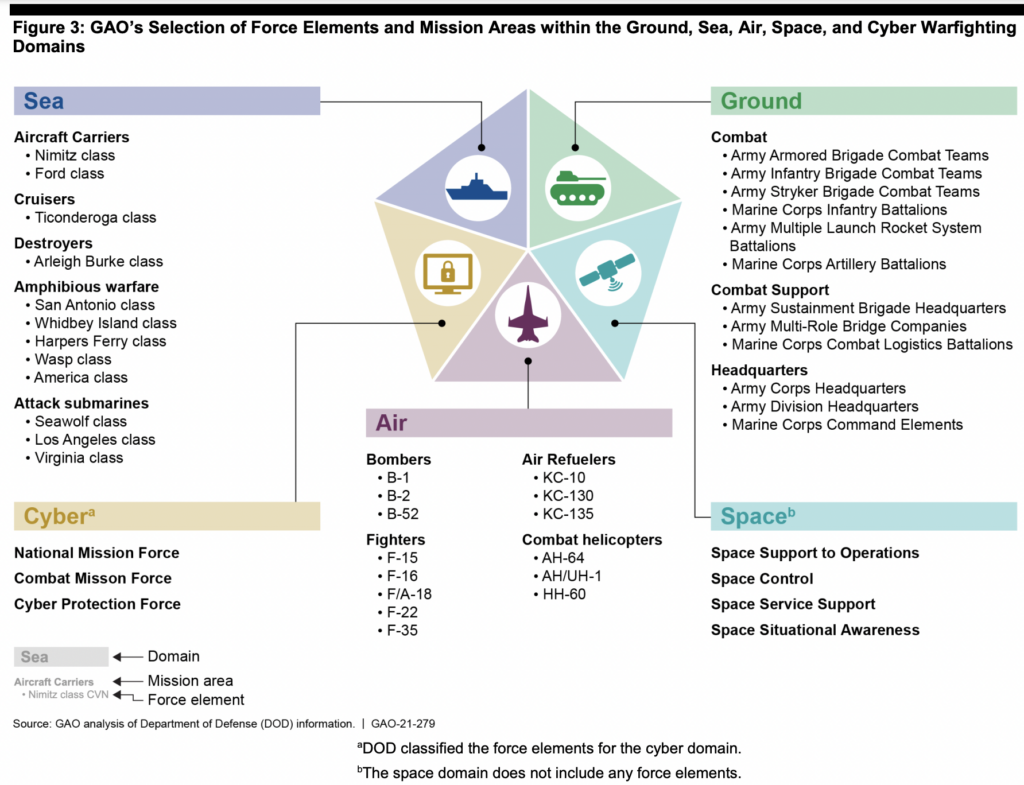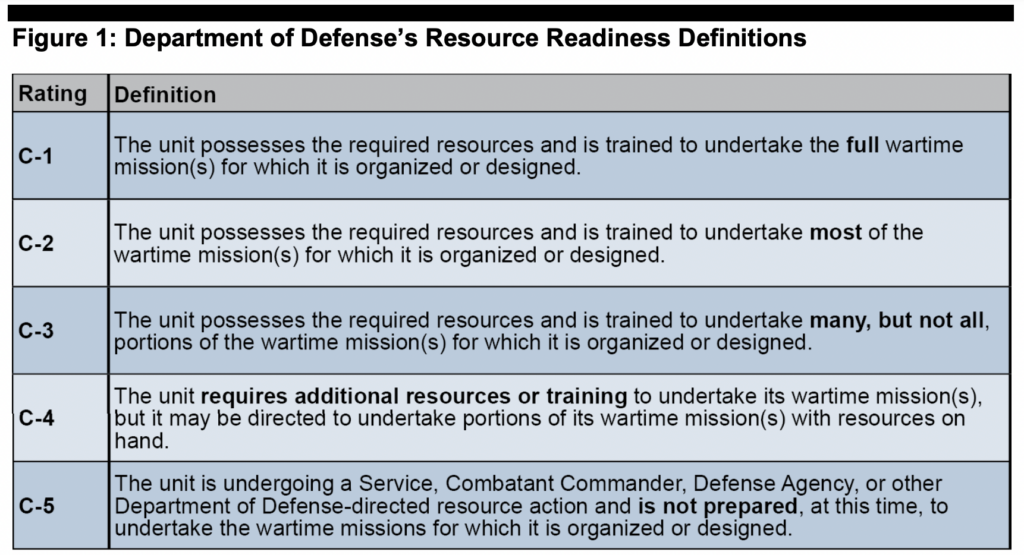
SOURCE: Government Accountability Office (GAO)
WASHINGTON: The GAO just released a new report on military readiness trends from 2017 to 2019, one based on earlier classified reports to Congress, that found naval forces were in the worst shape, largely due to maintenance backlogs at shipyards.
The Army and Marines did best: but GAO didn’t say why. The Army has made a massive push in recent years to retrain, rebuild, and de-stress units worn out by 20 years of warfare in Afghanistan and Iraq. Air units across the services fell in some categories but rose in others.
The report did not cover 2020, when the COVID pandemic scrambled training plans, forced the cancellation of many exercises and further hobbled the already-stumbling shipyards.

Military units sampled by the GAO readiness study. SOURCE: Government Accountability Office (GAO)
GAO sampled dozens of different types of units from across the military: Navy ships and submarines; Army and Marine ground units; air units from across the services, everything from F-35 fighters to AH-64 helicopters; and undisclosed cyber and space units.
Because Congress directed GAO to look at readiness by domain – air, sea, land, space, and cyberspace – it’s tricky to break things out by service. The “sea” domain consists entirely of Navy vessels, and the “land” domain purely of Marine and Army units, but “air” is a mix of all four services (the space force didn’t exist at the time), while the cyber and space domains aren’t broken out by service at all. GAO also noted that readiness reporting from space units was patchy and inconsistent, making them hard to rate.
GAO looked at two kinds of readiness reports:
- “resource readiness,” which is how unit commanders self-report the status of their personnel, equipment, and training, as reported in the famous “C-levels,” from C-1, ready to perform all wartime missions, to C-5, basically unavailable;
- “mission capability readiness,” which is how joint and service commanders rate units’ readiness to conduct all items on their Joint Mission Essential Task List (JMETL).
GAO found that readiness of the Army and Marine ground forces rose over the two-year period, while readiness of the Navy ships and submarines fell. The air, space and cyber domains all rose in terms of resource readiness, but fell in mission readiness. That suggests units are getting more of what they need to be ready – people, training, equipment, spare parts – but are still underperforming against their Joint Mission Essential Task List. Why that might be, GAO didn’t speculate.

Military “resource readiness” rating scale. SOURCE: Government Accountability Office (GAO)
In a ‘world first,’ DARPA project demonstrates AI dogfighting in real jet
“The potential for machine learning in aviation, whether military or civil, is enormous,” said Air Force Col. James Valpiani. “And these fundamental questions of how do we do it, how do we do it safely, how do we train them, are the questions that we are trying to get after.”


























